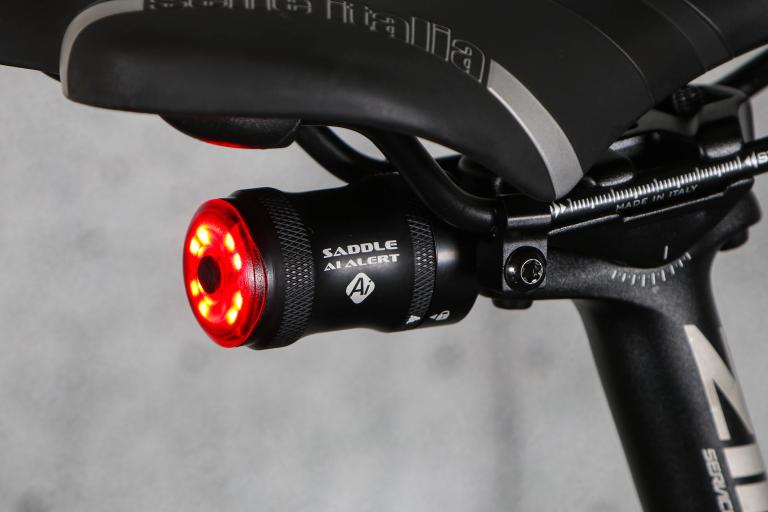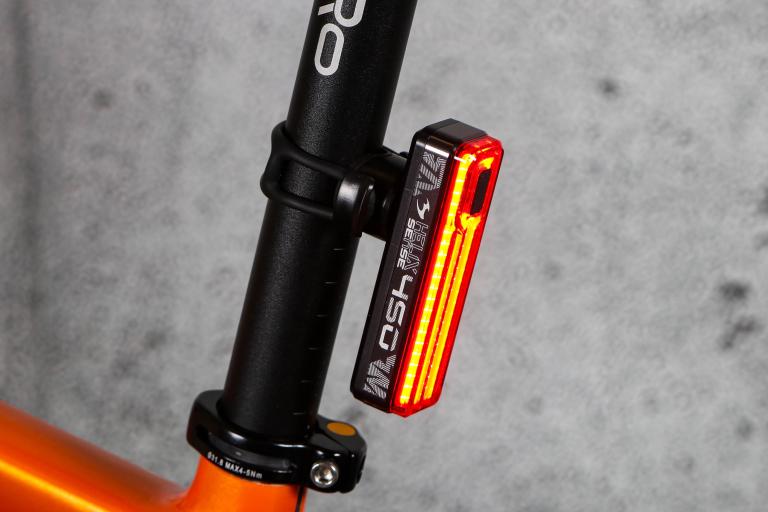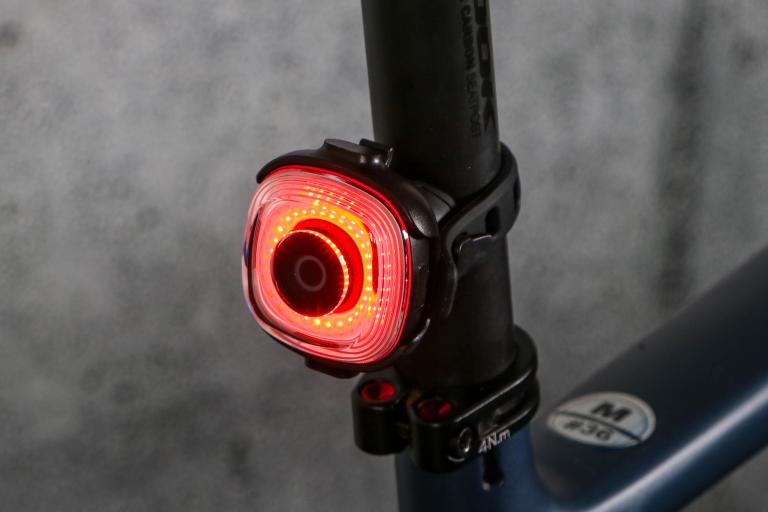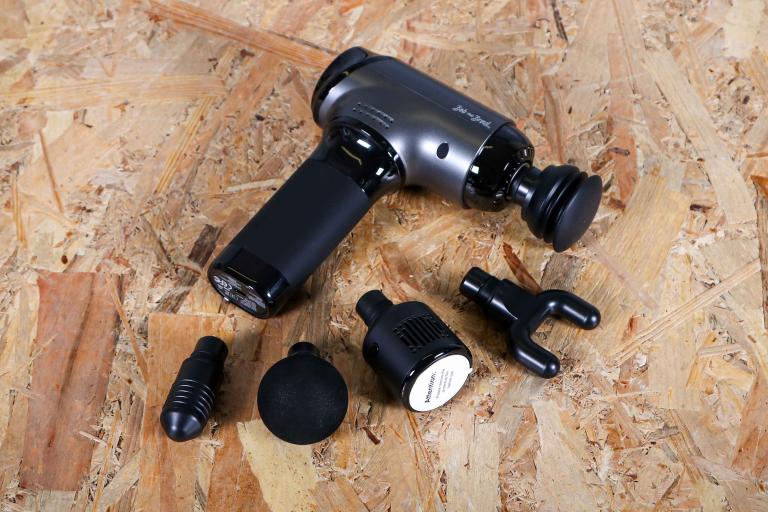- News
- Reviews
- Bikes
- Accessories
- Accessories - misc
- Computer mounts
- Bags
- Bar ends
- Bike bags & cases
- Bottle cages
- Bottles
- Cameras
- Car racks
- Child seats
- Computers
- Glasses
- GPS units
- Helmets
- Lights - front
- Lights - rear
- Lights - sets
- Locks
- Mirrors
- Mudguards
- Racks
- Pumps & CO2 inflators
- Puncture kits
- Reflectives
- Smart watches
- Stands and racks
- Trailers
- Clothing
- Components
- Bar tape & grips
- Bottom brackets
- Brake & gear cables
- Brake & STI levers
- Brake pads & spares
- Brakes
- Cassettes & freewheels
- Chains
- Chainsets & chainrings
- Derailleurs - front
- Derailleurs - rear
- Forks
- Gear levers & shifters
- Groupsets
- Handlebars & extensions
- Headsets
- Hubs
- Inner tubes
- Pedals
- Quick releases & skewers
- Saddles
- Seatposts
- Stems
- Wheels
- Tyres
- Health, fitness and nutrition
- Tools and workshop
- Miscellaneous
- Tubeless valves
- Buyers Guides
- Features
- Forum
- Recommends
- Podcast
 2022 Magene L508 Radar Tail Light.jpg
2022 Magene L508 Radar Tail Light.jpg£125.49
VERDICT:
Good radar unit that's a useful extra eye on the road behind
Good radar range
Easy to set up
Battery life shorter than Garmin Varia
Warning to cars not persistent
Weight:
79g
Contact:
At road.cc every product is thoroughly tested for as long as it takes to get a proper insight into how well it works. Our reviewers are experienced cyclists that we trust to be objective. While we strive to ensure that opinions expressed are backed up by facts, reviews are by their nature an informed opinion, not a definitive verdict. We don't intentionally try to break anything (except locks) but we do try to look for weak points in any design. The overall score is not just an average of the other scores: it reflects both a product's function and value – with value determined by how a product compares with items of similar spec, quality, and price.
What the road.cc scores meanGood scores are more common than bad, because fortunately good products are more common than bad.
- Exceptional
- Excellent
- Very Good
- Good
- Quite good
- Average
- Not so good
- Poor
- Bad
- Appalling
Magene's L508 Radar tail light is a good quality unit that gives useful information about what's going on behind you. It's also available branded as a Magicshine light (we have both, and they're identical) so shop around as prices between the two can differ a bit. Whichever you find the cheapest, it's likely to be a bit less than Garmin's Varia alternative. Overall, it's not quite as good either.
Rear-facing bike radars work using the Doppler effect: moving targets reflect electromagnetic waves at a different frequency to the transmission frequency. If you measure the returned frequency and the time the reflection took, then you can calculate the relative speed and distance of the object. The Magene claims a 140-degree field of view, so it'll detect upcoming cars round bends, assuming there's line of sight to the vehicle.
Magene claims that the L508 can detect cars from up to 140m away. On a country lane where traffic isn't moving that quickly and so engine and tyre noise isn't high, that's far enough away that the radar will pick cars up before you hear them. Of all the times you might want to use a radar like this, that use case is the one that I think gives the most benefit. You get a good warning of vehicles approaching behind you, and you don't have to keep looking over your shoulder to check what's happening back down the road.
On the Hammerhead Karoo 2 I paired with the L508, detected vehicles appear in a strip down the side of the screen, with the colour indicating approaching speed. I certainly found that cars would often pop up on my GPS and I'd think to myself that it was a false alarm, only to check over my shoulder to see a car approaching some way back. After a while I started to trust the radar more and more.
On busier and faster roads you're more likely to hear the traffic, but the radar is still useful, especially to see if the noise is more than one vehicle. The Magene radar is very good at discriminating between a single vehicle and two vehicles, and a bit less good at working out if there are two or three cars coming past. But I don't think I was ever surprised by a second car when the radar had only shown one. Obviously, when there's more of a stream of traffic the radar becomes a bit less useful, but it still comes in handy. For example, if you need to avoid a pothole then the safer (ie, less filled with detritus) option might be around the outside into the traffic flow. If you were going to move out you'd have a look anyway, of course, but if you already know there are cars approaching you can decide to move in rather than out.
False alarms?
Any false positives and false negatives? Not very many, really. Obviously, false negatives – there's no car shown but there's one there – are very much worse. When I was properly testing the radar – that is, when I was trying to pay attention all the time to whether it was picking up vehicles – I didn't see it miss a single one. False positives are a bit more common, caused mainly by riding partners dropping off and coming back to your wheel. If the speed discrepancy is big enough it'll sometimes trigger a warning. But I didn't ever get any when it said there was something approaching for no reason.
Battery life
Magene claims a battery life of between 6 and 12 hours depending on what light setting you're using: the low power radar is much less of a battery drain than the LEDs. Solid mode (6hrs) has the LEDs on full power; there's a flashing mode (10hrs), a low-and-steady peloton mode (8hrs), and a pulse mode (12hrs). You can have the light off, too.
If you're just looking for a rear light without the radar, check out our guide to the best rear bike lights.
I found the battery life to be about as claimed, maybe an hour less in the current chilly conditions but good for a day's riding and easy to charge on the go from the well-protected USB-C port if you're carrying a battery pack on a longer ride.
Whichever mode you're in, the L508 fires up in bright flashing mode for two seconds if it senses a car approaching, and there's an accelerometer which senses braking and brightens up the light if you're hauling on the anchors, to warn your riding buddies.
The two-second warning is certainly useful, but I'd like to see a more persistent flash. If a car's coming up on a lane and the radar sees it at 140m away, by the time it's got anywhere near you the light has stopped flashing. Compare that to Garmin's Varia radar, the only real competitor to this Magene unit at present, which goes into warning mode for the duration it sees a vehicle is approaching. That makes more sense to me.
One other shortcoming that the Magene radar has – and the Garmin radars work in a similar way – is that of following cars disappearing. If a car's coming up behind you then the radar spots an approaching thing and warns you. However, if there's nowhere to pass and the car ends up following you at the same speed for a bit, it'll give you the all-clear. Then, when the car moves to overtake, you'll get another warning, but by the time that pops up the car's basically next to you.
If you've been paying attention to the radar and you've seen the first warning then it's not usually a surprise, and a car following you is often something you'll hear, anyway. But I feel like the logic could be a bit more robust here. If a vehicle has come up behind you at speed, and then slows to your speed a certain distance away, there's no reason a doppler radar shouldn't still be able to discern it as a thing moving at the same speed, so it'd be good to have a more persistent warning. Or at least the option of one: presumably the radar doesn't flag up objects moving at the same speed because other riders would set it off all the time. But if you're on your own it'd be useful to be able to tweak the settings.
Value
At around £125 RRP the Magene L508 is a fair bit cheaper than its one real competitor, the Garmin Varia RTL515, which retails for £169.99. In terms of radar performance they're much of a muchness.
Iwein reviewed the RTL515 and still uses it, and on rides with him the L508 picked up cars with the same kind of accuracy and from the same kind of distance.
The Garmin's rear light is quite a bit brighter and the battery life is also superior to the Magene, although the latter does get a USB-C port which allows for faster charging than the Garmin's Micro-USB.
Overall, I'd say the Garmin is a bit better, but then it's a bit more expensive, so it's more or less honours even in terms of what you get for your money.
Conclusion
Do you need one? Well no, you don't need one. And I can't say I was convinced at the outset that a radar would be something I'd get along with. But I've been persuaded: I've found it a helpful tool, especially on rides where I'm alone (many of them) and rides where I'm mostly on smaller roads and lanes (nearly all of them).
Many people will probably be thinking that a mirror can do the job for a lot less money, and to an extent that's true, but a radar can proactively warn you on your GPS, audibly and visually, without you having to do anything. For me, that's proved useful enough that I've continued to use the Magene after testing.
Overall, the Garmin is a better unit, but there's enough to like about the Magene that it's worth looking at.
Verdict
Good radar unit that's a useful extra eye on the road behind
road.cc test report
Make and model: Magene L508 Radar Tail Light
Size tested: One size
Tell us what the light is for, and who it's aimed at. What do the manufacturers say about it? How does that compare to your own feelings about it?
Magene says: "Magene L508 radar tail light adopts millimeter-wave pulse signals and has 40° beam angle, able to detect rear vehicles within 140m even at bends. Support 5 light modes, suitable for various scenarios.
L508 can accurately provide visual and audible alerts from display terminal to warn of vehicles approaching from behind up to 140 meters away, to help bikers be on full alert in the surroundings.
The radar of L508 has a beam angle up to 40°, so it can detect the rear vehicles at bends.
Eliminate the blind spot and protect you all the way.
The radar of L508 uses millimeter-wave pulse signals to provide comprehensive and stable detection of high-speed motor vehicles and even slow-moving bicycles.
Support 220° wide viewing angle with visibility of up to 1.2km and effective warning of rear vehicles to ensure safe riding.
Support solid mode, flashing mode, pulse mode, peloton mode, and only radar mode, and ensure quick and easy switch with one click.
You can preset the radar on/off under each light mode through the Magene Utility APP to combine light and radar as you want.
Peloton mode: With low brightness and soft light, it protects eyes of group bikers, providing a more comfortable experience in team riding.
After connecting to Magene Utility APP, you can customize the tail light flashing/pulse interval.
* Purchase to unlock customizable light mode setting function.
The tail light is equipped with a built-in high-precision acceleration sensor, to quickly detect and enter 3 seconds highlight mode even with slight braking, while ignoring shaking and small bumps to prevent false starts.
If the rear vehicle suddenly comes from behind within 140m, the tail light enters flashing mode for 2 seconds. It warns the rear vehicle keeping a safe distance from you, and protects you from safety risks caused by sudden acceleration of rear vehicle on open road.
The tail light can be connected to bike computers, watches, or other display devices that can support the standard protocol, such as Magene C406 Pro smart bike computer, partial Garmin, Wahoo, Bryton bike computers and partial Garmin watches, etc."
Tell us some more about the technical aspects of the light?
Magene lists:
Dimensions: 38x94x25mm
Weight: 65g
Maximum detection distance: 140m
Horizontal detection angle: 40°
Vertical detection angle: -10°- +10°
Relative speed of detectable targets: 10-120km/h
Charging port: Type-C
Wireless protocol: Bluetooth, ANT+
Modes: 5 kinds (solid mode, flashing mode, pulse mode, peloton mode, and only radar mode)
Battery life: 6h in solid mode; 10h in flashing mode; 8h in peloton mode; 12h in pulse mode; 3 months in standby mode (affected by the environment and temperature)
Luminous flux: 20 lm (solid mode); 20 lm (flashing mode); 6 lm (peloton mode); 3-20 lm (pulse mode)
Smart brake sensing: Yes
Auto-sleep/auto-wake: Yes
Viewing angle: 220°
Waterproof grade: IPX7
Package includes: L508 radar tail light *1, rubber straps *3, seat post bracket (with pad) *1, manual *1, Type-C power cable *1, safety strap *1.
Compatible bike computers: Magene: C406 Pro
Garmin: 130, 130P, 520, 520P, 530, 820, 830, 1000, 1030, 1030P
Wahoo: Bolt, Roam
Byrton: R750, S500
Compatible with all cycling computers that support ANT+ Radar
Compatible watches: Garmin: 245, 645, 735, 745, 935, 945, D2, Fenix 5, 5s, 5x, 5Plus, 5xPlus, 6s, 6x, 6Pro, 6sPro, 6xPro
Compatible APP: Magene Utility APP
Rate the light for quality of construction:
8/10
Rate the light for design and ease of use. How simple was the light to use?
9/10
Rate the light for the design and usability of the clamping system/s
9/10
Rate the light for waterproofing. How did it stand up to the elements?
9/10
Rate the light for battery life. How long did it last? How long did it take to recharge?
6/10
Rate the light for performance:
7/10
Rate the light for durability:
8/10
Rate the light for weight:
8/10
Rate the light for value:
6/10
Tell us how the light performed overall when used for its designed purpose
It performed well in a range of conditions.
Tell us what you particularly liked about the light
Good radar range, easy to set up, a bit cheaper than rival Garmin unit.
Tell us what you particularly disliked about the light
Battery life shorter than Garmin Varia. Warning to cars not persistent.
How does the price compare to that of similar products in the market, including ones recently tested on road.cc?
Garmin's Varia RTL515 is the only real direct competitor, which is about £45 more at RRP.
Did you enjoy using the light? Yes
Would you consider buying the light? Yes
Would you recommend the light to a friend? Yes
Use this box to explain your overall score
A solid 7. Some things could be improved but it's a good radar unit that's useful on any ride.
About the tester
Age: 50
I usually ride: whatever I'm testing... My best bike is: Kinesis Tripster ATR, Merida Scultura, Dward Design fixed
I've been riding for: Over 20 years I ride: Every day I would class myself as: Expert
I regularly do the following types of riding: road racing, commuting, touring, club rides, general fitness riding, fixed/singlespeed, Mountain Bike Bog Snorkelling, track
Dave is a founding father of road.cc, having previously worked on Cycling Plus and What Mountain Bike magazines back in the day. He also writes about e-bikes for our sister publication ebiketips. He's won three mountain bike bog snorkelling World Championships, and races at the back of the third cats.
Latest Comments
- eburtthebike 6 sec ago
"Political opposition has come from the Conservatives, who have waged a long-standing resistance to the plans,....."...
- mdavidford 4 min 54 sec ago
I believe that was a response to widespread* vocal criticism over the original treatment....
- lesterama 10 min 34 sec ago
Regan Dickenson sounds like a clown....
- quiff 24 min 46 sec ago
Surely the origin of the road names. EDIT: should have read chrisonabike's reply first...
- chrisonabike 41 min 14 sec ago
It doesn't seem to have enlightened the driver....
- mdavidford 1 hour 30 min ago
If you're going to be ripped off, you should at least know how much you're being ripped off to the tune of....
- SecretSam 3 hours 15 min ago
I've just bought a second hand Mason but that 105 mechanical Strael looks a seriously good deal. Deeply pretty bike and I love the company ethos.
- andystow 6 hours 38 min ago
Ok, just noticing this on my own bike. The rear wheel I bought from wheelbuilder.com. The front I rebuilt on my existing SON hub with a rim ordered...
- jamesha100 11 hours 52 min ago
This is so sad but also so sadly familiar. I am not sure whether more punitive sentences - e.g. life driving bans - would make any difference but...











Add new comment
18 comments
Not sure I agree with the conclusion of this review. 1, I have cycled many miles behind a garmin varia and a magene and there is no perceptible difference in luminous intensity between the various modes. 2, The magene has a brake light function, the varia doesn't. 3, The Magene is often discounted to $100 on AliExpress so can be bought for less than 2/3rds the price of the Garmin 4, Battery life is near identical mode for mode. 5, Magene uses the hugely superior USBC connector which provides fast charge and better waterproofing. The Garmin uses the cheap, slow charging and out moded micro USB .. why? 6, Finally and somewhat subjective, my cycling pals thought the Magene more aesthetically pleasing both to look at and to follow as a rear light.
Come on CC. This product is excellent quality, ridiculously good value and brings some much needed competition to the overpriced and sometimes mediocre Garmin products.... 3.5 / 5 ... really ??
Bryton have one of these out soon.... EU cycling press had info in November 22....
Maybe a silly question.
Can I use this to stand next to the road and see how fast the cars are going by?
Can I use this to stand next to the road and see how fast the cars are going by?
Not if you want something more than a colour-coded sidebar indicating relative speed, and even if you were stationary and the disply issued a kph readout (which the blurb indicates does not occur), The Filth would revel in not paying any attention.
I don't know if this specific model supports vehicle approch speed, but on the Varia paired with a Garmin Edge device, you can install a Connect iQ app on the head unit, this will give you some custom data fields on the Edge, including relative speed, approach speed, vehicle count, closest vehicle distance, etc. These are available on the Edge in real time.
https://apps.garmin.com/en-US/apps/c5d949c3-9acb-4e00-bb2d-c3b871e9e733#0
With this app installed, you can also upload the FIT file to mybiketraffic.com and retrospectively analyse passing speeds, etc.
Not sure if the Magene L508 implementation of the ANT+ radar protocol is supported, but I use the data field with a Varia Radar. Also as indicated, not type approved for speed evidence so feds with do SFA with it.
Wow. So you can basically collect traffic speed data as you ride. It would be good if there was an app that anonymously uploaded and collated this info on a map, a bit like those crime statistics maps (or why not add this crime data to those existing maps?).
I couldn't find the original thread where you helped me with all this, but I have got it all working. I did use the approaching speed in a close pass submission (60 kph in a 48 kph).
Not got as far as an upload to mybiketraffic though.
Fastest approach so far is 103 kph.
Managed to stop a bloke overtaking at a pinch point when I saw he was also going 60 kph in 48 kph. Of course he turned off 100m later !
I did use the approaching speed in a close pass submission (60 kph in a 48 kph)
The police definitely ignored the quoted relative speed, and probably ignored the close pass
They did or they claim they sent a letter.
2 letters for the price of one here
https://twitter.com/tony_eh/status/1608408958569517057
The Magicshine/Magene does work (extremely well) on the Mybiketraffic.com site.
I use this via upload of the Garmin .fit file, all the relevant radar data is present.
My need this morning would be for getting a slightly better impression to complement my own guestimate on speed on a road being proposed for turning into a "shared street" in my locality.
Limit is 30mph. I estimate speed as 35+ for a fair few cases. Lots of big lorries too (lots LHD), and a rat run through a private car park at one end which I counted as 2 cars per minute at 2:30pm today. Plus quite a number of houses and a popular indoor BMX/Skateopark. And real parking problems. But no sensible alternatives.
Hamilton Road ! It's partly about least-worst.
Ironically one of the Businesses down there is Fabrikat who make crash barriers, safety barriers and Sheffield Stands amongst other things.
https://tinyurl.com/ng17hamiltonroad
If access to an Android phone the Speedcam Anywhere app might be worth trying https://speedcamanywhere.com/
Note: it's an accelerometer that it uses for the braking function. It allows the unit to have an optional automatic standby feature e.g. during a mid ride break. On resumption/movement, it will then wake up.
There is an app which allows controlling of the flash frequencies. Note that this doesn't allow a day-flash, as it is actually occulting, and not flashing.
oops
amended.
Charging on the go is a big plus compared to garmin varia.
Eh? In the Varia radar range, I've had the original rear view radar, the RTL510, RTL515 and now the RCT715, and they've all been able to charge from external power whilst in use.
I have a varia RTL510 it definitly does not charge on the go, and it seems im not the only one with this issue :
https://www.bikeforums.net/electronics-lighting-gadgets/1217083-can-you-...
I think we'll have to agree to disagree. I charged the RTL510 in use several times when I had it, and the person who bought it from me still does. I've just tried RTL515 and RCT715 just in case a recent siftware update stopped it and radar & light stayed on, with green flashing charge light.
GPLama demonstrates here in a Varia tips & tricks video. https://youtu.be/J6lvKiCsj00